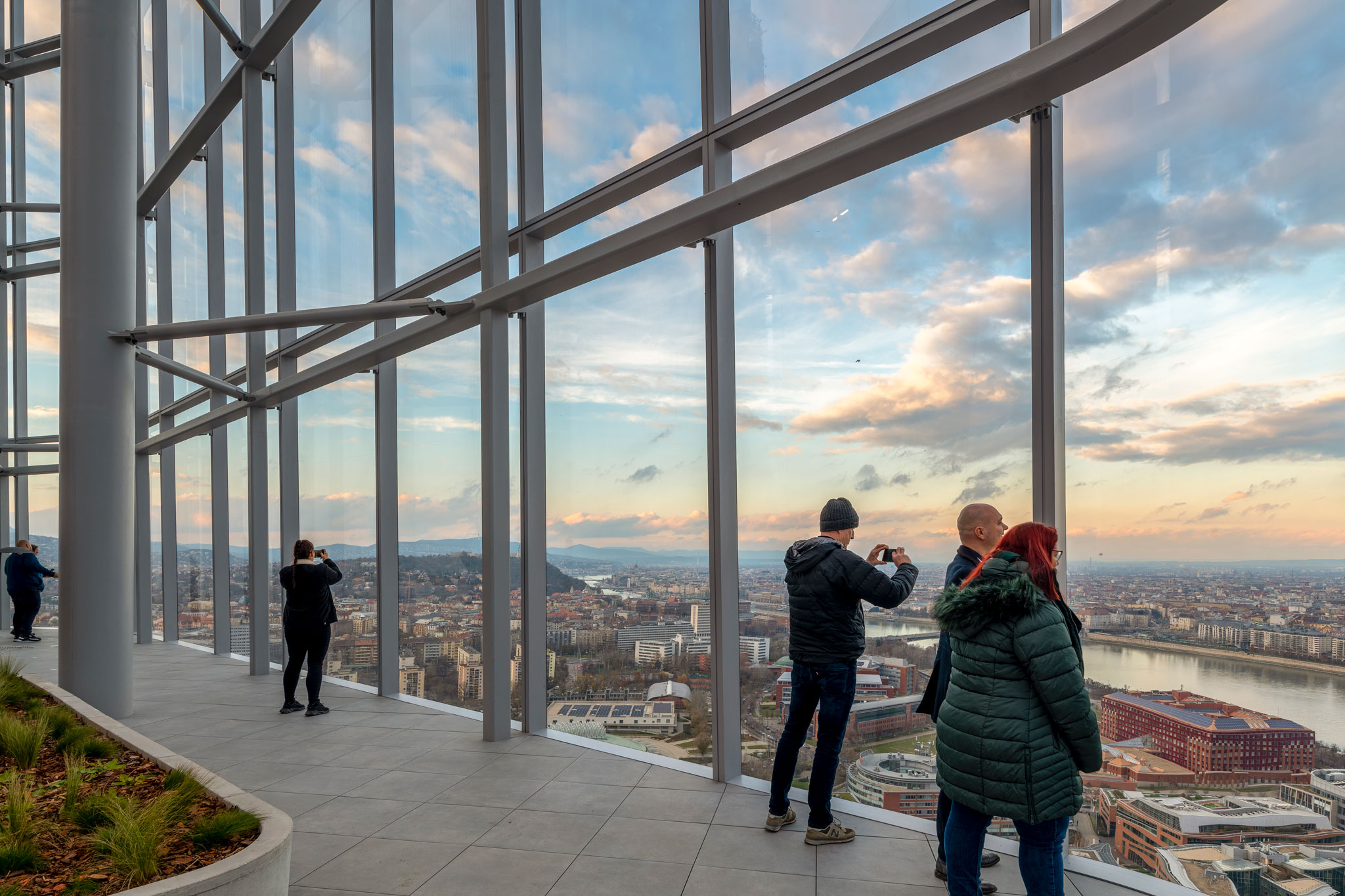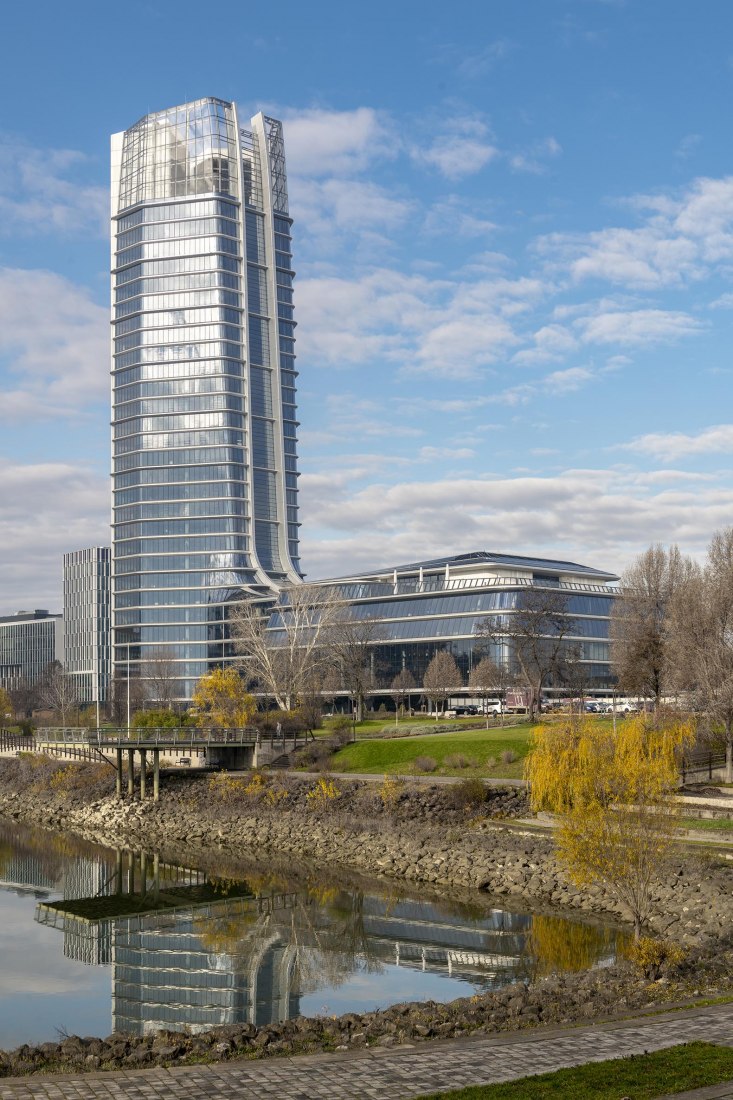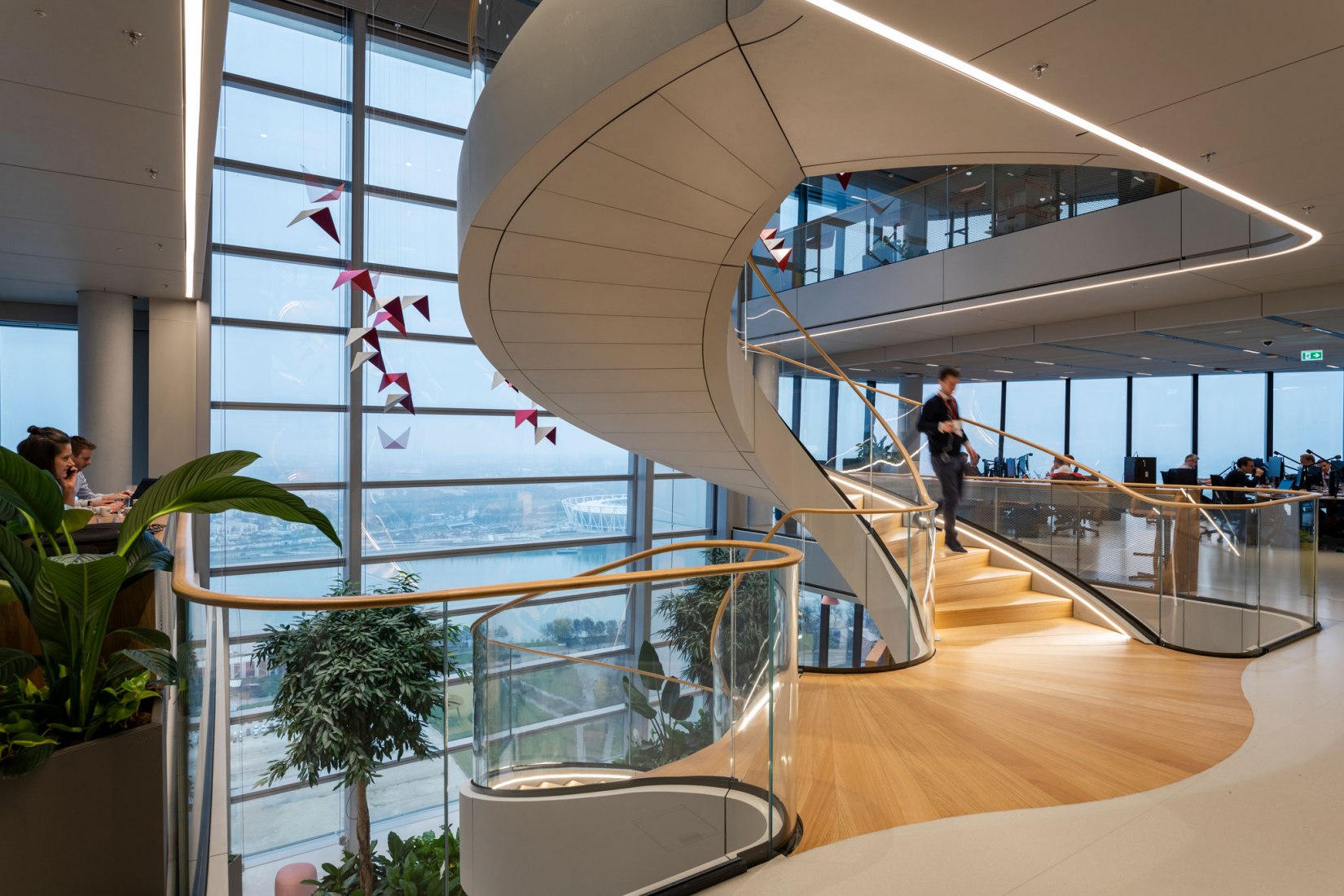Using cutting-edge technology to control light levels, temperature and views these workspaces are finely calibrated to create the perfect working environment, a light-filled inspirational space for people to work in. All occupants have a direct connection to the external environment providing daylight and views.

MOL Group Headquarters by Foster + Partners. Photograph by Nigel Young / Foster + Partners.

MOL Group Headquarters by Foster + Partners. Photograph by Nigel Young / Foster + Partners.
The building utilises low and zero-carbon technologies, such as integrated rooftop photovoltaic panels, and ground source heat pumps and features a greywater recycling and rainwater harvesting system. Heating and cooling are provided via a radiant panel system which enhances indoor environmental quality and comfort while allowing the central plant system to operate more efficiently compared to conventional systems. The heating and cooling plant system also integrates with the district heating system for added support and resilience, as well as cooling towers for ‘free-cooling’ when external conditions are appropriate.

MOL Group Headquarters by Foster + Partners. Photograph by Nigel Young / Foster + Partners.
Project description by Foster + Partners
MOL Headquarters is the new headquarters for the MOL Group, a global oil and gas company based in Hungary. The new building consolidates the company’s operations in one place while creating an exciting new addition to the city’s skyline.
An integral part of the MOL Group’s sustainable vision for 2030, the building provides a blueprint for the office of the future. Its unique form integrates a 28-storey tower with a podium a single form to create a unified campus. The lower floors house restaurants, a gym, a conference centre and a whole host of other facilities for staff, while the flexible office spaces are on the upper levels.
Greenery travels through the heart of the building, from the central atrium to the rooftop, bringing nature closer to the workspace. It also acts as a social catalyst, creating spaces for collaboration, relaxation and inspiration. The offset service cores create large flexible areas that encourage collaborative patterns of working. Using cutting-edge technology to control light levels, temperature and views these workspaces are finely calibrated to create the perfect working environment, a light-filled inspirational space for people to work in.
Setting a new benchmark both for Budapest and Hungary, the design of the building makes the most of its urban context to drive a sustainable response. The MOL Headquarters seeks to preserve live-work relationships as part of the urban experience, where people are able to walk or cycle to work. All occupants have a direct connection to the external environment providing fresh air, daylight and views. The building utilises low and zero-carbon energy sources, such as photovoltaics, and features rainwater harvesting and storage facilities.





















































